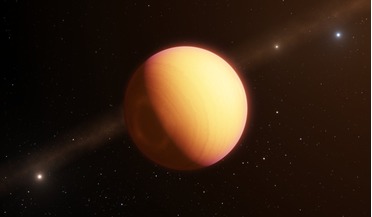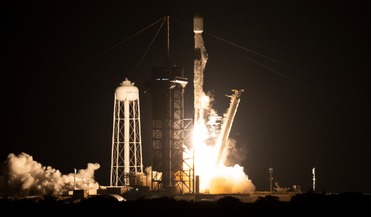ROOM: The Space Journal is one of the major magazines on space exploration, technology and industry. At ROOM, we share a common goal – advancement of peaceful space exploration for the benefit of humankind, all while bringing you detailed articles on a variety of contemporary topics. Our authors include researchers and industry leaders from all over the world, which lets us bring you the newest and detailed information about nasa exoplanet images.
 January 2023
Private space stations and NASA’s effort to re-invent itself
January 2023
Private space stations and NASA’s effort to re-invent itself
... lifetime ended up being more than twice its original design-life (32 years rather than 15). However, the NASA of the 2020s is clearly intent on reinventing itself. Today, it is no longer developing ‘technical specifications’ in-... it is producing ‘performance specifications’ from which private space companies develop competitive designs that NASA selects after a detailed review. This article explores the status of planning and implementation for...
 August 2018
Exoplanet census promises radical discoveries
August 2018
Exoplanet census promises radical discoveries
...and rogue, free-floating planets. Its coronagraph instrument will pioneer technology for imaging exoplanets that will enable future missions to image Earth-like planets and search for signs of life. The past quarter ...Princeton faculty in 1999, he was the Chief Systems Engineer for NASA’s Gravity Probe B satellite. His research has a particular focus on the direct imaging of exoplanets from space. His lab developed the shaped pupil coronagraph and...
 April 2019
Scanning the skies for exoplanets
April 2019
Scanning the skies for exoplanets
... at large. With thousands more worlds left to uncover, NASA has already dispatched a replacement to carry on where Kepler left off. Launched in April 2018, the Transiting Exoplanet Survey Satellite (TESS) is designed to search for planets...) M dwarfs, so there’s every reason to think that we’ll find similar systems,” said Vanderspek. Conceptual image of the TESS mission. Any other business? Hot-Earths resemble our planet by name and size only...
 November 2018
How many people does it take to colonise an exoplanet?
November 2018
How many people does it take to colonise an exoplanet?
...Located at 4.2 light years (40,000 billion km), Proxima Centauri b is almost an ideal destination - as far as exoplanets go. But while this distance may be small by astronomical standards, it remains utterly vast on the human scale. The...of black holes. He has been selected to lead observations of galaxies for a forthcoming NASA satellite called IXPE (Imaging X-ray Polarimetry Explorer, to be launched in 2021). The HERITAGE project created and lead...
 27 March 2019
Storm-plagued exoplanet revealed in detail with GRAVITY
27 March 2019
Storm-plagued exoplanet revealed in detail with GRAVITY
...scientists work out how planets and planetary systems form. HR8799e is also completely inhospitable too; the exoplanet suffers from a powerful greenhouse effect – a bit like Venus – which heats the super giant... disaggregate and rain down into the interior. This paints a picture of a dynamic atmosphere of a giant exoplanet at birth, undergoing complex physical and chemical processes.” It is thanks to GRAVITY’s superb optical interferometry ability ...
 10 December 2021
SpaceX launches NASA's IXPE mission
10 December 2021
SpaceX launches NASA's IXPE mission
...NASA’s Imaging X-ray Polarimetry Explorer (IXPE) mission launched at 1 am EST (06:00 GMT) Thursday on a SpaceX Falcon 9 rocket from NASA’s Kennedy Space Center in Florida. A joint effort with the Italian Space Agency, the IXPE observatory is NASA... extraordinary first,” said Thomas Zurbuchen, associate administrator for the Science Mission Directorate at NASA Headquarters in Washington. “Together with our partners in Italy and around the world,...
 13 August 2018
NASA to partner with six US companies to develop space exploration technologies
13 August 2018
NASA to partner with six US companies to develop space exploration technologies
...cost, reliable, high-performance, stand-alone Terrain Relative Navigation (TRN) sensor suite. According to NASA Administrator Jim Bridenstine, "These awards focus on technology collaborations with the commercial space sector that leverage... emerging markets and capabilities to meet NASA's exploration goals. While these key technologies will support NASA's science and human exploration missions in the future, these ...
 May 2024
Out of this world – NASA’s textile technicians and innovations for space voyages
May 2024
Out of this world – NASA’s textile technicians and innovations for space voyages
...applications of technical textiles that keep both astronauts and spacecraft safe in the hostile space environment NASA, US Airforce research agencies and other investors financed DexMat, a climate technology startup, to ... stronger than steel, lighter than aluminium and boasts the conductivity of copper. NASA’s textile outreach activities NASA’s textile scientists and engineers have always collaborated with artists, fashion designers, academic...
 January 2017
Blueprint for NASA’s journey to Mars
January 2017
Blueprint for NASA’s journey to Mars
... However, the mission sequence is intended to be executed without any substantial increase in the current inflation-adjusted NASA human exploration budget, given a phased retirement of the ISS beginning in 2024. The key to a cost... Camp concept builds upon existing deep space technologies in development today and provides a blueprint for NASA’s Journey to Mars. This plan provides the opportunity for significant scientific discovery, can be evolved...